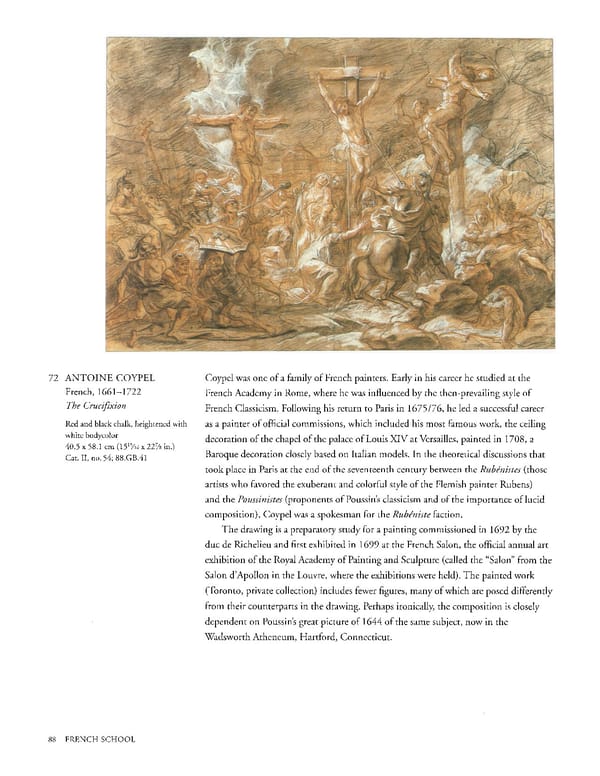72 ANTOINE COYPEL Coypel was one of a family of French painters. Early in his career he studied at the French, 16611722 French Academy in Rome, where he was influenced by the thenprevailing style of The Crucifixion French Classicism. Following his return to Paris in 1675/76, he led a successful career Red and black chalk, heightened with as a painter of official commissions, which included his most famous work, the ceiling white bodycolor decoration of the chapel of the palace of Louis XIV at Versailles, painted in 1708, a 40.5 x 58.1 cm (15 15/16 x 22% in.) Cat. II, no. 54; 88.GB.4l Baroque decoration closely based on Italian models. In the theoretical discussions that took place in Paris at the end of the seventeenth century between the Rubenistes (those artists who favored the exuberant and colorful style of the Flemish painter Rubens) and the Poussinistes (proponents of Poussin's classicism and of the importance of lucid composition), Coypel was a spokesman for the Rubeniste faction. The drawing is a preparatory study for a painting commissioned in 1692 by the due de Richelieu and first exhibited in 1699 at the French Salon, the official annual art exhibition of the Royal Academy of Painting and Sculpture (called the "Salon" from the Salon d'Apollon in the Louvre, where the exhibitions were held). The painted work (Toronto, private collection) includes fewer figures, many of which are posed differently from their counterparts in the drawing. Perhaps ironically, the composition is closely dependent on Poussin's great picture of 1644 of the same subject, now in the Wadsworth Atheneum, Hartford, Connecticut. 88 FRENCH SCHOOL
 Masterpieces of the Getty Museum: Drawings Page 88 Page 90
Masterpieces of the Getty Museum: Drawings Page 88 Page 90